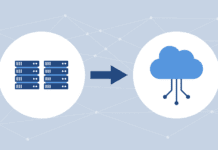CTERA Networks is giving the Linux Ext3 file system additional data protection in the form of new snapshot capabilities.
CTERA’s Next3 open source file system builds on the Ext3 file system to provide thin volume snapshots and point-in-time recovery, change auditing and retention of previous file versions, features the company says are lacking in Linux Volume Manager (LVM) snapshotting capabilities. Next3 is licensed under GPL and could eventually find its way into the Linux Kernel via the Ext3 or Ext4 file systems.
The file system is also the basis of the company’s Cloud-Attached Storage appliances, the C200 and CloudPlug, which combine local and cloud data storage and backup and are aimed at small businesses and service providers.
Snapshots record the state of the file system at any given moment, creating a point-in-time copy of the data that can be used to restore previous versions of files. CTERA says the offering is the first solution for Linux that offers file-system level snapshots that make efficient use of disk space, store snapshots reliably and maintain low performance overhead.
CTERA marketing vice president Rani Osnat said current LVM snapshot capabilities require that storage space be allocated in advance, creating “overhead that a lot of people don’t find acceptable.”
Next3 doesn’t require pre-allocation of storage space for snapshots, instead allocating space as it is needed. CTERA says the snapshots are also space efficient, as unchanged data is shared among the file system and its snapshots, and the system can retain large numbers of snapshots without performance degradation. Snapshots can be created and deleted quickly, and cleanup is performed automatically after snapshot deletion so storage space can be quickly reclaimed.
Next3 is fully forward and backward compatible with Ext3, so migrating an existing volume from Ext3 to Next3 is easy, requiring no changes to the on-disk structures, the company says.
Terri McClure, senior analyst at Enterprise Strategy Group, said in a statement that Next3’s snapshot feature “goes well beyond what users can do with Ext3 environments today. CTERA is bringing high-end snapshot capability to SMB storage, and Next3 is a key ingredient in this formula. By introducing a simple and elegant snapshot solution for Linux users, Next3 can make effective data protection a reality for any company, regardless of size or budget.”
Amir Goldstein, CTERA’s Next3 development team leader, said the company “will continue to work with the open-source community to extend its functionality and hope to integrate it as a standard component in future versions of the Ext file system.”
For more information about Next3, visit www.ctera.com/next3.
Follow Enterprise Storage Forum on Twitter





